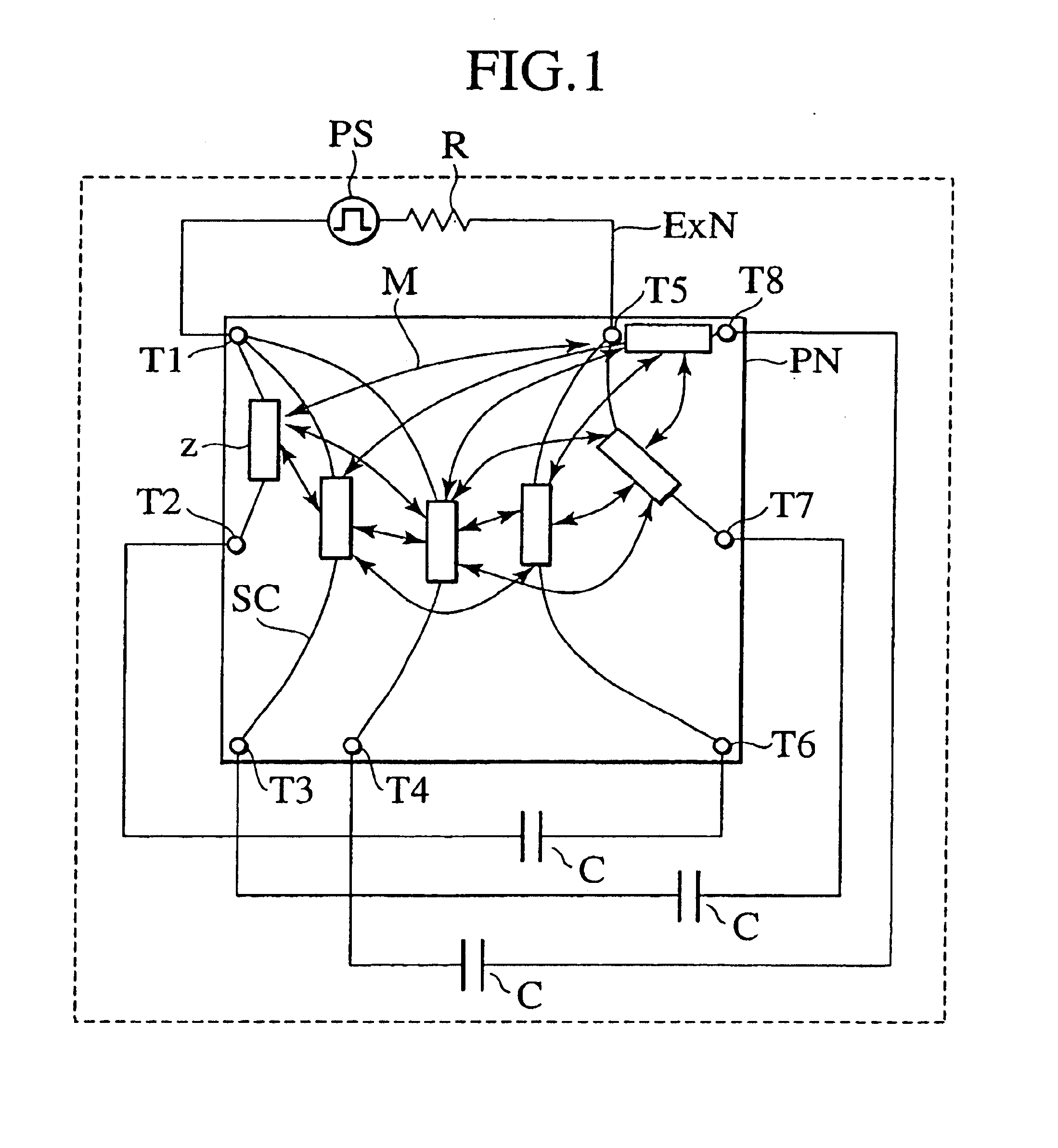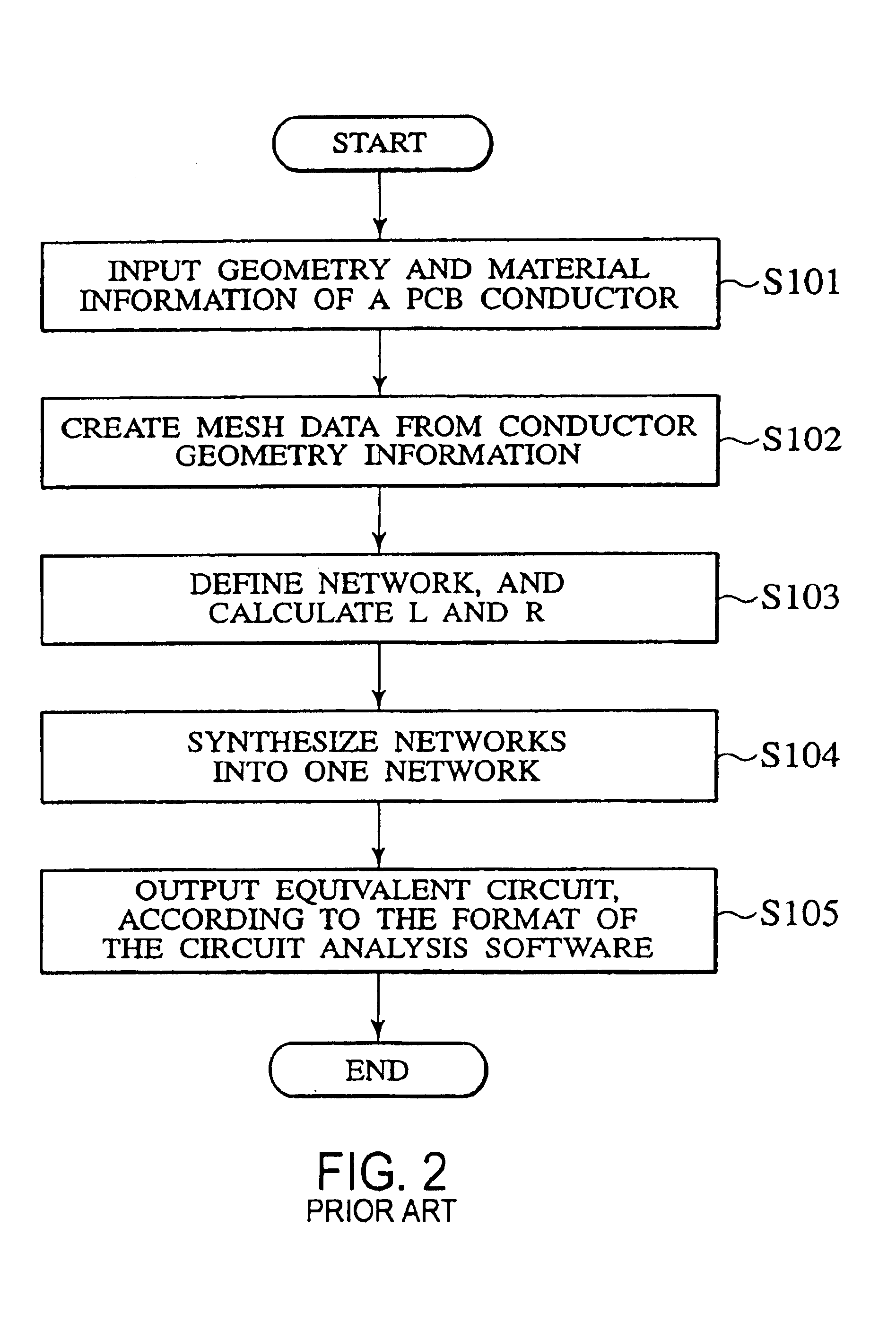Method of deducing equivalent circuit and system for the same
a technology of equivalent circuits and equivalent circuits, applied in the direction of testing circuits, resistance/reactance/impedence, instruments, etc., can solve the problems of increasing product development costs, reducing competitive power against products of other companies, and lsi giving radiation and conduction noises to other electronic equipment. achieve the effect of ensuring the intended accuracy
- Summary
- Abstract
- Description
- Claims
- Application Information
AI Technical Summary
Benefits of technology
Problems solved by technology
Method used
Image
Examples
second embodiment
Next, the second embodiment relating to the invention will be described. In this embodiment is shown a case that executes the circuit analysis by using the equivalent circuit attained according to the foregoing method.
FIG. 17 illustrates a network image by the circuit analysis that used the equivalent circuit to the PCB in FIG. 3B. As shown in FIG. 17, a square-wave voltage source PS and a resistor R are connected in series between the terminals T1 and T5. Capacitors C of the same capacitance 0.1 nF are each connected between the terminals T2 and T6, between T3 and T7, and between T4 and T8 . The resistor R has a resistance, for example, 5Ω. FIG. 18 illustrates a voltage waveform of the voltage source PS in the circuit analysis that used the equivalent circuit according to this embodiment. FIG. 19 illustrates a current waveform that flows through the voltage source PS. From the current waveform in FIG. 19, even a simple network composed of the voltage source, resistors, and capacito...
PUM
 Login to View More
Login to View More Abstract
Description
Claims
Application Information
 Login to View More
Login to View More - R&D
- Intellectual Property
- Life Sciences
- Materials
- Tech Scout
- Unparalleled Data Quality
- Higher Quality Content
- 60% Fewer Hallucinations
Browse by: Latest US Patents, China's latest patents, Technical Efficacy Thesaurus, Application Domain, Technology Topic, Popular Technical Reports.
© 2025 PatSnap. All rights reserved.Legal|Privacy policy|Modern Slavery Act Transparency Statement|Sitemap|About US| Contact US: help@patsnap.com



